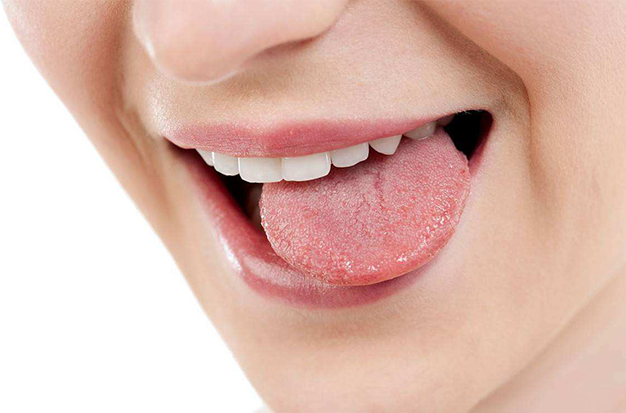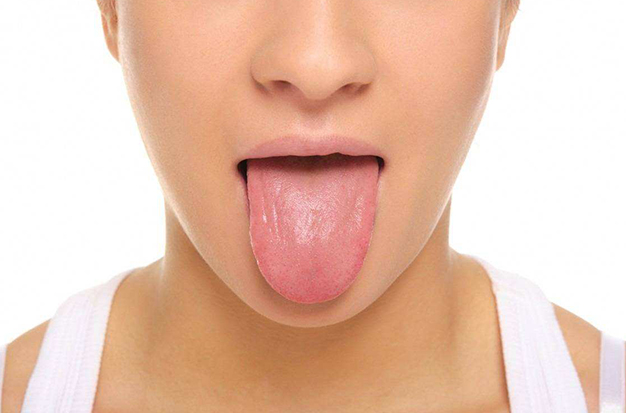What Your Tongue Says About Your Health?
The tongue is a crucial gauge of our health and can offer hints about what’s happening inside our bodies. Since it is connected to many of our vital organs, for instance, and because the tongue has a variety of colors, textures, coatings, and shapes, it can reveal health-related information. Learn more about the signs that appear on your tongue to understand how to interpret the messages that your body is sending you.
Table of Contents
What Is The Health Message On Your Tongue?
Here is a list of five indicators your tongue can give you about your health, now that you know what to look for:
Dehydration
One of the initial signs of dehydration is frequently a dry mouth and tongue. Your body loses more water during that time than it gains. Your body eventually stops producing as much saliva in an effort to conserve what little liquid it does have, leaving your tongue covered in a thick layer of white.
There are times when certain medications or medical procedures may have unintended side effects, including tongue dryness and a thick coating. In either case, it’s crucial to stay hydrated each day so your body can operate at its best. By consuming lots of water, water-rich fruits and vegetables, and limiting your intake of caffeine and alcohol, you can keep your body hydrated.
Nutritional Deficiencies
You could also use your tongue to determine whether your body is deficient in any nutrients. For instance, an excessively red tongue may indicate low iron levels as well as vitamin B12 and folic acid deficiencies. Your tongue’s color should return to normal once you change your diet to include more foods high in these vitamins or take a supplement.
Poor Oral Hygiene
It may be a sign of poor oral hygiene or heavy tobacco use if you notice your tongue is black and hairy-looking. You can restore your tongue’s healthy pink color with good oral hygiene practices, such as regular flossing and brushing of your teeth and tongue.
As long as you take certain steps to restore and rebalance your health, the majority of changes in your tongue are harmless and disappear on their own. It’s best to get medical help if those changes persist for more than a few days.
Excess Stress
On your tongue, unusual redness, sores, and ulcers may be signs that your body is under too much stress. Additionally, if the edges of your tongue appear to be marked, you may have been biting your tongue frequently out of stress. You might avoid more serious conditions like heart disease, depression, or cancer if you recognize these symptoms early and manage your stress.
Weak Immune System
Due to its function in digestion, your tongue has a close relationship with your immune system. What does that imply? Your tongue will alert you if your immune system is compromised. A yeast infection of the mouth, also known as oral thrush, could be the cause of the tongue’s pale, white color. You might also have oral lichen planus if you notice white, lace-like patches, swollen red tissues, or even open sores on your tongue. Use these ailments as signs that you should strengthen your body’s defenses and visit a doctor, even though they are all treatable.
The Color Of Your Tongue
The color of a healthy tongue will be similar to that of others in the family, even though no two tongues in the family will look exactly alike.
“According to Dr., the tongue should be red to pale pink overall. It can have various shades, all of which are acceptable, according to Baker.”
You may have a health problem if your tongue isn’t its usual reddish to pinkish color. The colors your tongue might be and what they might mean are listed below.
- Dark red to purple: A dark red to purple tongue could be an indication of something as straightforward as a vitamin deficiency, but it could also be an indication of a fever or an infection, such as Scarlet fever or Kawasaki disease.
- Blue: A blue tongue might be a sign of poor oxygenation, which could be caused by lung issues.
- Yellow: Bacteria can accumulate on the tongue as a result of factors like poor oral hygiene, tobacco, alcohol, or coffee use, or dry mouth.
- Black: An apparently black (and even hairy-looking) tongue.) can be due to certain antibiotics, diabetes, poor oral hygiene and smoking. Furthermore, Pepto-Bismol has been demonstrated to momentarily darken the color of your tongue. “Thankfully, this is uncommon and can usually be resolved by maintaining good oral hygiene, says Dr. Baker said.
- White: A white tongue may be an indication that you have oral thrush, a fungus that has infected the mucous membranes in your mouth. It might also be a sign of dehydration or be brought on by benign conditions like leukoplakia, which occasionally develops into cancer.

The Texture And Shape Of Your Tongue
Your tongue’s appearance and shape can vary, just as its natural color can. Even though your tongue may seem bumpier than usual, you may not need to contact your doctor if this happens.
However, there are a few that are important to consider when assessing the texture and shape of your tongue.
- The teeth marks have scalloped edges. This typically happens because of how the tongue rests against the teeth, but it can also happen because of TMJ or nighttime teeth grinding.
- Bumpy or sore areas of skin: The causes of painful bumps on your tongue include smoking, canker sores, smoking, and oral cancer.
- Red or white bumps: If a white or red lesion appears on your tongue, it might be an early or advanced tongue cancer and needs to be examined by a doctor right away. “Numerous tongue lesions can also be benign and go away on their own, according to Dr. If it doesn’t go away in a couple of weeks, it’s best to have your tongue examined, Baker said.”
- Thin tongue: It may be a sign of dehydration if your tongue becomes extremely thin.
How Can I Maintain The Health Of My Tongue?
If you want to keep your mouth healthy, taking good care of your teeth and your tongue are equally important. Here’s how to do it:
Drink plenty of water – staying hydrated helps wash away bacteria and food from your tongue and also helps to prevent a dry mouth, which increases your risk of fungal infections and tooth decay.
Clean your tongue – use a toothbrush, tongue scraper or cleaner. This aids in clearing the tongue’s surface of bacteria and dead cells that could otherwise result in bad breath.
Give up smoking – it can irritate your tongue and contribute to conditions like leukoplakia.
Chew sugar-free gum – this stimulates saliva production, which helps rinse away bacteria, clears food, reduces acid in your mouth and alleviates a dry mouth.
How Often Should I Visit A Doctor?
Consult a doctor if any of these symptoms worry you and there isn’t a clear temporary cause. To seek medical advice, Dr. Ramskill advises:
- You’re worried about the colour of your tongue or any changes in sensation
- You notice any lumps, bumps or sores on your tongue
- You have unexplained or severe tongue pain that continues for several days
- You experience itchiness that gets worse and doesn’t go away
- You have a white patch in your mouth that hasn’t gone away for 2 weeks
If you experience any teeth or gum issues, including bleeding, painful or swollen gums, or toothaches, schedule an appointment with a dentist.

